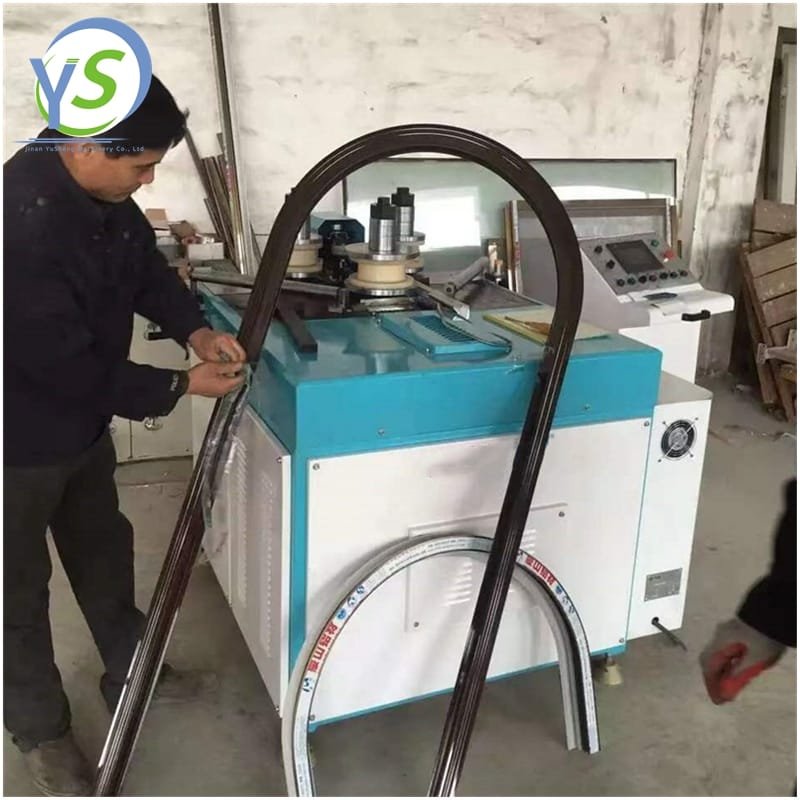In the realm of metal fabrication, the ability to transform raw materials into intricate shapes and structures is paramount. Among the myriad of machines that cater to this industry, the aluminum profile bending machine stands out for its unique capability to bend aluminum extrusions into perfect circles, arcs, and curves with remarkable precision and efficiency. This technological marvel has revolutionized the way aluminum profiles are utilized in various applications, from architectural designs to automotive components.
The Basics: What is an Aluminum Profile Bending Machine?
An aluminum profile bending machine is a specialized equipment designed to manipulate aluminum extrusions, which are long, straight sections of aluminum that have been shaped through an extrusion process. This machine employs advanced bending techniques to gradually curve the aluminum profiles into desired circular shapes without compromising their structural integrity. It is equipped with a robust frame, precision controls, and a clamping system that securely holds the profile in place during the bending process.
Working Principle and Key Components
The core of an aluminum profile bending machine lies in its bending mechanism, which typically involves a rotating or oscillating arm that applies gradual force to the profile. This force is carefully controlled to ensure uniform bending along the entire length of the profile. The machine may also feature heating elements to soften the aluminum slightly, making it more pliable and easier to bend without cracking or deformation.
Key components of these machines include:
- Clamping System: Holds the aluminum profile securely in place during bending.
- Bending Arm: Applies controlled force to the profile, gradually bending it into the desired shape.
- Precision Controls: Allows operators to set and monitor bending parameters such as angle, radius, and speed.
- Heating Elements (optional): Assist in softening the aluminum for easier bending.
- Measurement and Adjustment Mechanisms: Ensures accurate bending to the specified dimensions.
Applications and Benefits
The versatility of aluminum profiles, combined with the precision of bending machines, has led to a wide range of applications. These include:
- Architectural Design: Circular aluminum frames for windows, doors, and decorative elements.
- Automotive Industry: Frame components, protective barriers, and custom vehicle parts.
- Furniture Manufacturing: Circular legs, arms, and supports for chairs, tables, and other furniture items.
- Lighting Industry: Circular tracks and fixtures for LED lighting systems.
One of the most significant benefits of using an aluminum profile bending machine is the ability to achieve high levels of accuracy and repeatability. This ensures that each bent profile meets stringent quality standards, reducing waste and enhancing production efficiency. Additionally, the machines are designed for ease of operation and maintenance, allowing fabricators to quickly adapt to different bending requirements without extensive training.

Advancements and Future Trends
With the ongoing advancements in technology, aluminum profile bending machines are becoming increasingly sophisticated. Modern machines incorporate automation, AI-driven algorithms, and real-time monitoring systems to further enhance precision and productivity. These innovations are driving the adoption of bending machines in new industries and markets, where the demand for custom, curved aluminum components is growing.
Moreover, the focus on sustainability is leading manufacturers to develop machines that use less energy and generate fewer emissions. The ability to recycle and repurpose aluminum profiles also aligns well with the circular economy principles, making these machines an attractive option for eco-conscious fabricators.
In conclusion, the aluminum profile bending machine is a cornerstone of modern metal fabrication, enabling the creation of complex, curved aluminum structures with unparalleled precision and efficiency. As technology continues to evolve, these machines will play an even more critical role in shaping the future of architecture, automotive design, furniture manufacturing, and beyond.


